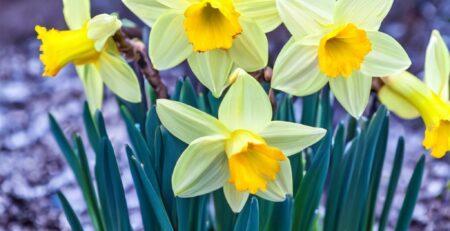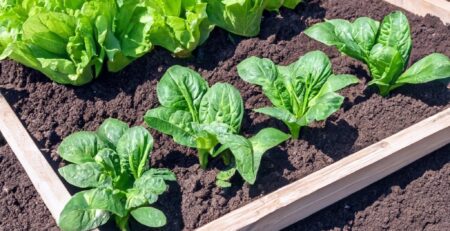How to select the right plants for your garden?
You may wonder how to choose the right plants for your garden, but there are several factors you should consider, including climate, soil type, and the amount of money, time, and effort you are willing to invest in the maintenance of your garden. If you’re starting from scratch, consider a book on gardening or a plant selection guide to learn how to choose the right plants for garden.
Choosing the right plants for garden is an essential part of planning your garden. Choose plants that are suitable for your lawn soil, which will reduce your maintenance. They will also be healthier and more resistant to diseases and pests. Make sure you consider climate and soil pH levels when planning your garden.
9 Essential Factors You Should Keep in Mind Before Making Your Plant Choices:
1.Soil Type
Knowing the soil type of your home garden is essential for healthy plant life. Planting the wrong plants in unsuitable soil can cause all sorts of problems and even ruin a garden. There are several things to know about soil types: sandy, clay, silty, peaty, chalky, and loamy. The kind of plants you want to grow will depend on the type of soil your lawn has. If you are unsure about your soil type, contact our landscape experts, who will help you with the best plants for garden.
2.Know the pH of the Soil
Soil pH is a measure of how acidic or alkaline the Soil is. Soils with a pH of 7.0 are considered neutral; anything below that is considered acidic, and anything above that is considered alkaline. Soil pH can be adjusted to make your soil hospitable to plants, but it’s important to remember that this change is temporary. As the solubility of minerals or nutrients is highly affected by the soil pH, it’s advisable to make your plant choices as per the type of lawn soil.
3.Water Requirements
Unless you live in a particularly arid region, home gardens typically need one to two inches of water per week. A general guideline is one inch of water per week, provided through rain or watering. This number may need to be increased in hot climates, however. Vegetables, for instance, need more water during hot weather. Consider the availability of water in your region before selecting the plants for garden; you can even refer to a plant selection guide or seek professional guidance from a Georgetown, MA florist.
4.The Climate of Your Home Lawn
Knowing your region’s climate is essential for designing a lush, beautiful home garden and lawn. A great way to enhance your garden’s climate is to grow plants native to your region. By absorbing carbon, trees will serve as a “carbon sink” for the atmosphere. You can make your home garden a lot greener and more climate-friendly by adopting the principles of climate-friendly gardening and referring to the plant selection guide. Your home garden and lawn will need a nutrient-rich climate to survive.
5.Consider the Season
The changing seasons have a profound impact on the growth of plants. While there is no perfect season to plant a home garden, autumn is one of the best times. The Soil is warm and moist, which helps plants to grow new roots. It’s not advisable to plant anything in winter as the Soil becomes too cold and too saturated for most plants. Instead, winter is the time for maintaining plants and preparing for spring planting.
6.Vegetable & Farming
Home gardening is one of the most ancient forms of farming and is beneficial to your health and Soil. The first step in planning a home garden is choosing the vegetables you want to grow. Refer to a plant selection guide if you are unsure about the plant choices you want for your home garden. Also, if you don’t have time to plant everything in a row, you can buy them already grown. However, it is best to consider the timing of farming in a particular season.
7.Shape & Color
Plants are often chosen because of their form, texture, or color. Shape and color play a role in how your garden looks. Form and texture are not always tactile, but they matter, and you need to make your plant choices that suit these attributes. It is also essential to consider how much sunlight your garden will receive daily. Choosing the right plants for garden is essential for a beautiful home garden. Consider going for Massachusetts flowers or native plants in your area.
8.Pest-proof plants
Make a list of garden plants you want on your lawn and understand how to protect them from pests and insects. The key to selecting pest-proof plants is to remember the types of insects that attack your plants. Certain plants attract pests like snails and aphids, while others may repel pests altogether. Certain aromatic plants such as fennel, Rosemary, and mint are excellent natural deterrents. For additional pest-repelling plants, try lavender, catmint, or mint.
9.Maintenance of Plants for Garden
You need to know some basic guidelines to maintain plants in a healthy state. The first thing to do is to check the health of your plants. Check for signs of leaf spots, rot, and pests. Don’t bring in infected plants because these can damage the entire garden. Use effective pesticides and extermination methods to rid your garden of destructive bugs. Contact us to learn more about how to maintain your garden and help them grow well.
Key Takeaways
The cornerstone of fine gardening is analyzing environmental conditions. You must determine the amount of sun and shade, soil composition, and water availability. Out of the long list of garden plants, different plants require different amounts of sunlight, varied soil types, and water. They need adequate space and the right combination of sun, shade, and water for optimal growth. To select the best plants for garden, you should consider the specific conditions of your location.
FAQ:
What plants should I put in my garden?
You must make plant choices depending on your lawn’s soil type and climatic conditions. You can refer to a plant selection guide or go through our list of garden plants available on our website.
Which plant is best for a home garden?
For Annual Plants, you can go for Orange Marigold, Cosmos, Allure Purple Rose Geranium, False Sunflowers, etc.
For Perennials Plants, go for Tiny Monster Cranesbill, daylilies, coneflowers, etc.
What factors should be kept in mind before selecting plants for a garden?
Factors like soil type, the pH level of the Soil, climatic conditions of the lawn, availability of water, and the size of your lawn are the key factors to consider before selecting the plants for garden.
Why is it essential to select the appropriate plant for a specific site?
Selecting the plants for garden that will thrive and grow in a given set of conditions is key to long-term success, survival, and reduced maintenance needs.






